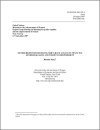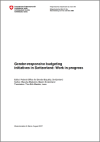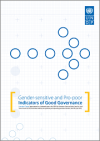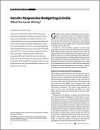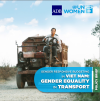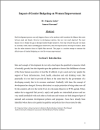FOUND 58
This paper uses examples from Australia and the Pacific Island Countries and Territorities to address the following questions:How can we assess a government's achievements in gender responsive budgeting? How can gender responsible budgeting be made sustainable in the face of change?
Labour market issues, be those of employment, unemployment, inactivity, wages and the like are very important for every country since they are linked to some of the main indicators of economic wellbeing or lack thereof.
The first debates on gender-responsive budgeting initiatives emerged in Switzerland in 1994, The choice of methods for conducting gender-differentiated analyses and the means by which they are conducted have been informed, and continue to be informed, by the relatively early emergence of gender-resp
This paper was prepared as a background to the UNDP Oslo Governance Centre and Indian Council for Social Science Research (ICSSR) International workshop on engendering and empowering governance indicators, New Delhi, April 2005.
The article examines the two main strategies adopted by the Government of India for institutionalizing gender responsive budgeting to highlight what has gone wrong and what needs to be fixed in order to achieve better outcomes for women.
Transport is one of the most important aspects of national infrastructure and a key to gender equality. Women’s opportunities to access paid work are reduced when there is poor investment in gender
This paper provides guidance on how to make Public Finance Management (PFM) reforms gender responsive. It presents an overview of PFM reforms and explains how and why they are important to the achievement of gender equality outcomes.
Well-being gender budgeting (WBGB) experiences use a multidimensional approach for planning and budgeting combining the Capability Approach along with gender responsive budgeting.
This paper is an attempt to measure the effectiveness of Gender Budgeting as a tool for women empowerment. In recent years, Gender Budget Initiatives have emerged as an effective way to bridge gender gaps.
This brief paper has been prepared in accordance with the guidance note from UN Women in consultation with the Equal Opportunities Commission (EOC), Civil Society Budget Advocacy Group (CSBAG) and the
